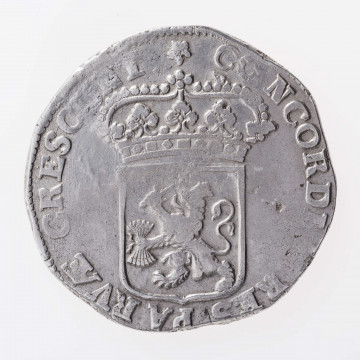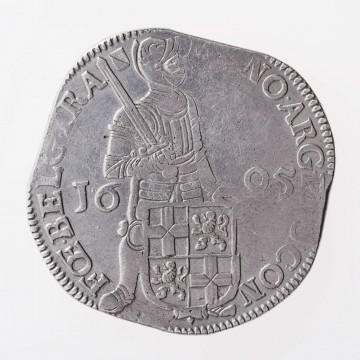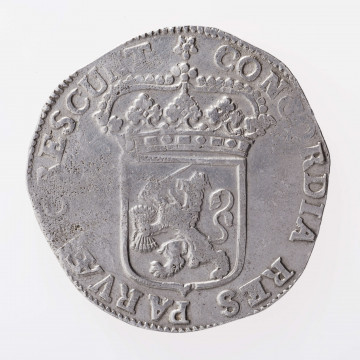
Silver ducat of the Republic of the United Provinces of the Netherlands
1695
National Museum in Lublin
Part of the collection: Money on Polish territory in the Middle Ages
At the turn of the 11th and 12th centuries the inflow of foreign denars – silver coins which were the foundation of the European monetary system until the early 14th century – to Poland stopped almost completely. The foreign coins that remained in use were then excluded from circulation and used as minting material for the issue of national currency. In this way, during the reign of Bolesław the Wrymouth (1102/1107-1138) native coins gained a quantitative advantage over foreign issues. This created conditions for the ducal authorities to implement mechanisms for controlling the money market and make the first attempts to monopolise it. The streamlining of the princely administration allowed the ruler to implement a system of cyclical money exchange, already well-established in Europe, which became an important source of the monarch's income. Newly-introduced denars, differing from the previous ones in appearance, were exchanged according to a conversion favourable to the issuer (e.g., 3 new denars for 4 old ones).
During his reign Bolesław the Wrymouthed successively introduced four types of denars into circulation, which can be linked to individual stages and events of his reign. They mark his co-rulership with Zbigniew (1102-1107), his assumption of power in the country after his brother's expulsion (1107), and the subsequent crime against him (1113), as well as the fourth type of denarius from the last stage of his reign, discussed here.
On this denarius we see a scene, already known from the coins of Bolesław the Bold (1058-1079), of a fight between a knight – possibly a prince – and a dragon. An isosceles cross topped with balls is on the reverse side. It is a coin without any inscriptions and clear references to the princely power. It is difficult to give a clear explanation of the scene on the coin. We are probably dealing here with a symbolic representation of the fight against evil, whose personification in the Christian tradition was the dragon. It is possible that the dragon personifies the pagan Pomeranians, the struggle with whom was marked by the reign of Bolesław the Wrymouthed.
Produced in Cracow, and possibly in Wiślica, the coins of Bolesław the Wrymouthed circulated mainly in Lesser Poland with the Sandomierz and Lublin regions, and in Silesia, central Poland and Mazovia, where they have been discovered. They remained in use for several decades. Single specimens are still recorded in several treasures hidden at the turn of the 12th and 13th centuries.
Tomasz Markiewicz
Author / creator
Dimensions
cały obiekt:
Object type
numismatic
Technique
stamp minting
Material
silver
Creation time / dating
Creation / finding place
Owner
The National Museum in Lublin
Identification number
Location / status

1695
National Museum in Lublin

1695
National Museum in Lublin

1694
National Museum in Lublin
DISCOVER this TOPIC
Castle Museum in Łańcut
DISCOVER this PATH
Educational path